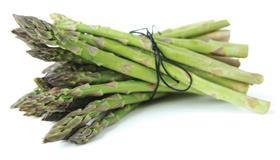
Reading the headlines over the past few months, the casual observer can be forgiven for thinking the world’s two largest economies are about to drag themselves (and the rest of us) into the abyss of a global trade war. Newspaper-selling headlines aside, the reality is far more nuanced. The likelihood of a trade war is still a remote possibility and shouldn’t form baseline projections.
One of the myriad of challenges when dissecting patterns in current global trade is the overwhelming addiction to economic prognoses, rather than those tempered by sensible geopolitical analysis. When we expand our viewpoint to include the strategic interests of the major players, in this case China and the US, we see that a different kind of game is afoot.
Recently I launched the Trumpian Model, which attempts to explain the US’s current modus operandi vis-à-vis negotiating or re-negotiating economic relationships. It is in this context, as a strategic lever to force Chinese economic behavioural change in the US’s favour, that the current trade rhetoric should be read.
Why should any of this posturing matter for the horticulture sector? Because of the longer-term implications for China’s trade with the rest of the world. The US has demonstrated that it can impose US$500bn of sanctions on Chinese exports if it wishes, while China can retaliate against less than one-third of that value, given it imports ‘only’ US$155bn of goods and services from the US. Despite this, China can complicate the US’s trade in a host of other creative ways, such as delaying port clearances, increasing inspections, and other non-tariff barriers, however, the ability to inflict tariff-related pain is firmly tilted in the US’s favour.
Stability is good for business, so the corollary goes; rattling a sabre at your largest trading partner is decidedly not – at least for the US. By proving itself to be a domineering, mercantilist transactional actor, the US has upended the balance of risk equation for procuring goods from US suppliers versus alternative, reliable partners such as Australia. This presents an enormous opportunity to the US’s competitors wishing to take a slice of the US’s trade pie. Some of those suppliers will rise to the challenge, leading to an intriguing question as to who will be the winners of this showdown.
Having a conversation in Australia about horticultural export is somewhat like invoking Godwin’s law – sooner rather than later, the conversation will turn inexorably to China. This Sino-centrism is understandable given the size of the Chinese market and the trade and cultural links between the two countries.
The sectors with the greatest potential to capitalise on any substitution opportunities presented by the US-China spat, limited as they are by counter-seasonality, are of course the professional and well-organised such as the vegetable and tree nut sectors.
Asparagus, komatsu, lettuce, perilla, turnips and yams are among the range of vegetables that Australia can export to China, although minimal demonstrable trade has occurred in recent years. Australian asparagus sales to China, the second most valuable national vegetable export (after carrots), totalled merely US$31,000 (7 tonnes) of the US$21m (3,700 tonnes) in global exports in 2017. Lettuce, another Australian product with access, has no trade to China despite US$7.1m (1,400 tonnes) in global exports, highlighting some of the niche opportunities available.
Australian exports of carrots globally, the country’s leading vegetable crop, stood at a whopping US$69m (101,000 tonnes) in 2017, up US$5m from 2016. The growth of newly expensive US carrot exports presents an opportunity for Australia’s high-quality suppliers capable of rapidly scaling-up production to meet Chinese demand; subject to phytosanitary access.
As the world’s largest almond producer, the US exported over US$500m in 2016 to China, its third-largest almond export market. With new tariffs rising from 10 per cent to 25 per cent on US products, Chinese importers looking for an alternative supply could readily switch to Australian sources, which exported only a modest US$1.5m to China in 2017. This comes as Australian tariffs are falling under the China-Australia Free Trade Agreement (ChAFTA). The tariff on Australian almonds in-shell fell from 24 per cent pre-ChAFTA to 4.8 per cent at present, and from 10 per cent on shelled almonds, to 2 per cent at present. Both will enjoy tariff-free access into China in 2019.
Eventually, following protracted negotiations and many incendiary tweets, the US and China will reach a new accord. The accord will likely include moves to reduce the trade imbalance and increase protections around intellectual property – both key demands of the US. While significant relational damage will have been inflicted on the US-China bilateral relationship, equally significant new opportunities will sprout for China’s trading relationship with alternative partners, including Australia. The question is now whether Australia’s producers will rise to the challenge.
The views and opinions expressed in this article are those of the authors and do not necessarily reflect the thought or position of Crowe Horwath (Australia)



